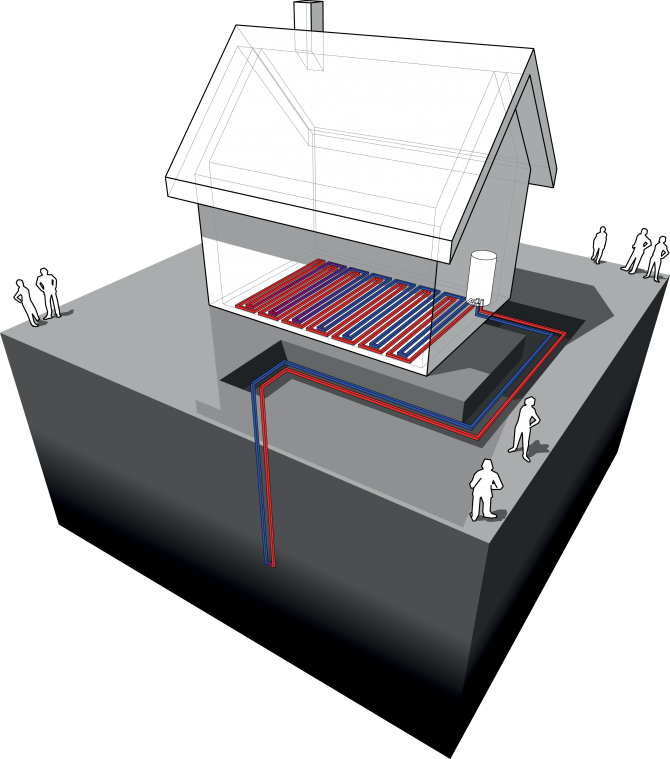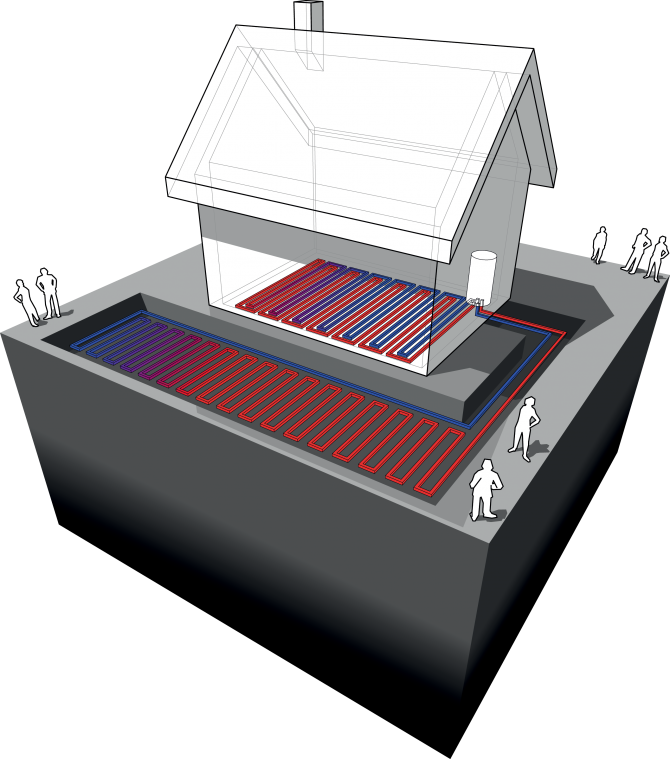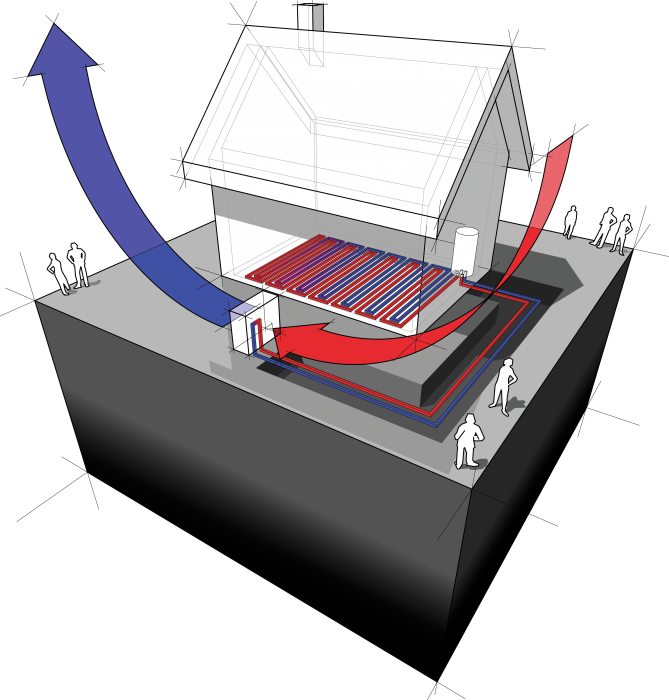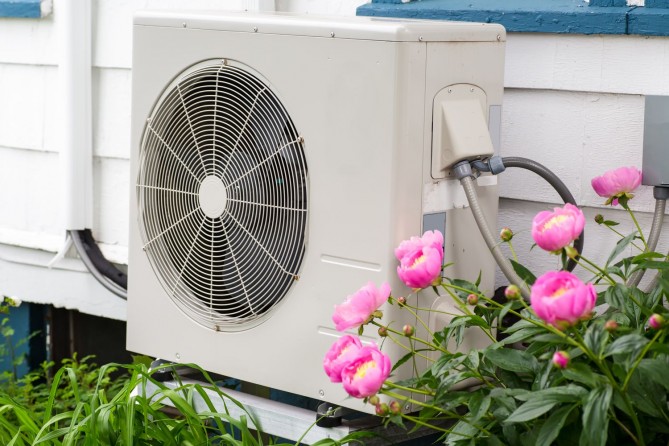

There are several types of pumps depending on the heat source that is used water, air, soil). They will either heat water, air or both (mixed heat pumps). Some are more suitable for urban areas than others.
| The principle behind the heat pump (link in French) is simple: it draws calories from the surrounding environment (water, air, ground) and expels them in the form of heat into the heating system to which it is connected. |
Heat pumps use a small amount of external power, which of course make them very interesting. Still, it is difficult to estimate its average energy use per year. In contrast with conventional heating systems, these pumps don't produce heat themselves but extract it from the air.
There are several kinds of heat pumps. They are used to:
There are even reversible heat pumps which work in either direction to provide heating in winter or cooling in summer.
Heat pumps extract energy from:
Your home must be sufficiently well insulated: ideally a passive house, or one whose insulation value is lower than K40.
A heat pump only works properly at low temperatures, so specific radiators are required. Due to their larger surface for heat exchange, the heating water they contain is less warm than water coming from a boiler unit.
The lower operating temperature is in turn extremely suitable for underfloor heating. In such situations, the heating water must not be too hot, because this can lead to health problems for the residents (blood flow in the legs).

The pump recovers heat from underground water. A well is drilled. The depth depends on the composition of the soil. The water is pumped by an electric motor.
This solution is not very practicable in towns and cities, unless you have a garden. The investment cost is fairly high, but the return is excellent.

For this, heat collectors that collect the geothermal heat are buried at a shallow depth (50-60 cm) in order to heat a water circuit.
The major disadvantage is that you need a surface area at least twice that of your home. Virtually impossible in towns and cities.
Price: from € 12,000 incl. VAT without premiums.

The pump captures the outside air and heats it to feed the water circuit which can be used for floor heating or domestic water.
Given the Belgian climate, this system is not as efficient as geothermal pumps and must therefore be supported with auxiliary heating. However, it is easy to install, even in towns and cities, and is not very costly.
Price: € 5,000 to 10,000 incl. VAT without premiums

The outside air is collected in the same way, but in this case it is blown straight into the home.
The operation of these heat pumps can be reversed so that they can cool the house in the summer. In that case, they do not extract heat from the outside air, but from the air indoors and then evacuate it outside. Heat pump and house act as a large refrigerator but without extremely low temperatures.
This system has the same disadvantages as the air pump for the water circuit, since the Belgian climate limits the performance of the system. The investment is relatively small, and the system is easy to install.
Price: € 5,000 to 10,000 incl. VAT without premiums.
The heat is drawn from the ground and returned to the ground via a heated floor.
Same disadvantage as the ground/water system: you need a large surface area.
Price: from € 12,000 incl. VAT without premiums
Some heat pumps can supply energy for both heating and water.
However, they are less efficient and a boiler has to be added (conventional or solar).
Expect a surcharge of € 2,000 compared to the prices stated.
There are even heat pumps with an air-conditioning function for the summer
Subscribe to our newsletter and stay informed about energyfacts.